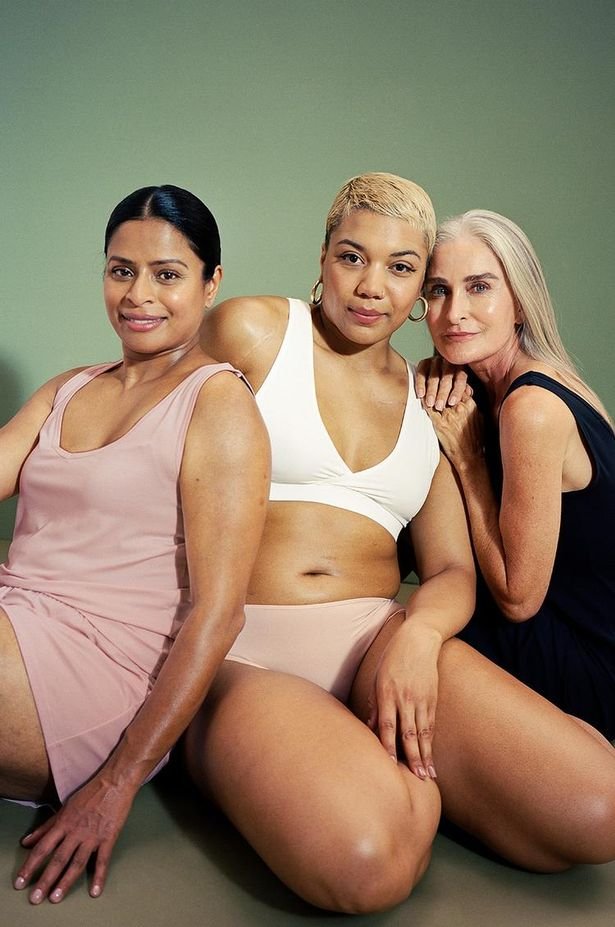Embracing Squiggly Career lines
I wish I’d known 20 years ago to expect a “squiggly” career path, not a linear one. According to Helen Tupper and Sarah Ellis, authors of The Squiggly Career: Ditch the Ladder, Embrace Opportunity and Carve Your Own Path Through the Squiggly World of Work, jumping between jobs, careers and industries is the new norm. It sounds great in theory, and if you’re a tech-savvy, inquisitive millennial (according to 2018 research by the Merck Group – specialists in healthcare and life sciences – millennials are the most curious generation in the workforce today), winding your way through the modern world of work probably sounds like a fun road trip. But for many of us in midlife, it’s as frightening as driving in the dark without headlights.
That’s not to say there aren’t many among us who don’t crave the fluidity, excitement and potential fulfillment that a midlife career pivot can bring. “Find the job you’d take if you didn’t have to work.” This was Warren Buffett’s advice to a classroom of students in the Sky documentary, Becoming Warren Buffett, which I watched this week. The business tycoon, philanthropist and seventh richest man in the world was lucky to find his professional holy grail early on in life; he described to the group of youngsters how he has “skipped” into work every day of his life because he loves what he does. But after school, many of us choose career paths for reasons that seem sound at 18, but make less sense at 48 (money, parental wishes, appearances, fear). For a lot of women, a midlife career change is an attempt to achieve the kind of job satisfaction that Buffett boasts, for others it might be the need to score a more secure form of income, then again some simply want more flexibility and freedom.
There are a myriad of reasons why women attempt midlife career transformations, and just as many why a lot of us are scared witless of them. In part, this is because women have always been fed a debilitating narrative, which says we’re worth less once we hit middle age. As a journalist writing for the New Statesman said, “As women get old, their age is seen to cast a shadow over every contribution they make and every belief they hold.” Unfortunately, research seems to support this. In a 2017 study published by The National Bureau of Economic Research for which researchers sent out fictitious résemés for applicants of varying ages, there was strong evidence to support that older women were less likely to be hired, while according to the European Commission, women in the EU are paid 16% less per hour than men, a figure that has remained virtually unchanged in almost a decade.
But for every piece of depressing theory about the fortunes of women in midlife, there’s a real-life example of someone who has succeeded against the odds. Bridal designer Vera Wang, for instance – the creator of Victoria Beckham’s wedding dress – did not open her first bridal boutique until she was in her 40s. Entrepreneur Maxine Clark, founder of the Build A Bear empire, was 48 when she launched the business in 1997. Boutique owner Patricia Field was 54 when she found fame as the principle stylist on Sex and the City, and actress Jane Lynch only became a household name aged 51 when she was cast as ruthless cheerleading coach Sue Sylvester in the musical TV show Glee. Meanwhile, author Sue Monk Kidd didn’t have her literary phenomenon The Secret Life of Bees published until she was 54.
The myth is that women in midlife fade, but the reality is that more often than not they shine.
That’s because we’re older, wiser and with a wealth of life experience, the value of which should never be underestimated. In fact, an article in The Huffington Post describes women over 40 as “The gold standard of employment” for exactly these reasons. “Over the years, they [women in midlife] have amassed a treasure trove of workplace wisdom, as well as important soft skills like knowing how to get along with colleagues, problem-solve at work, and manage office politics. Career-shifters, in particular, can bring a wide-ranging knowledge base and a willingness to learn new skills.” Women thinking of re-entering the workplace after years of raising children should remember the multi-tasking, skillful negotiating and time management – not to mention the emotional intelligence and mental energy – that raising children demanded of them. They brokered many deals through the years. Just because they didn’t happen in a boardroom doesn’t mean they don’t count.
Now we just have to believe our own hype. As Amelia Earhart said, “The most difficult thing is the decision to act, the rest is just tenacity.” My sister, Barbara, who made the career transition from medical research scientist working for the University of Sydney to high school science teacher at age 38, agrees. She suggests dipping your toe in the profession you’d like to move to if you can by approaching someone who works in the field; ask questions and shadow them if possible. “I was lucky to have a close friend who worked as a science teacher. Her support and mentorship were invaluable. I could ask her anything, from course content questions to tips on controlling a class of 30 12-year-olds armed with bunsen burners and matches.” While she had lectured at third level, she was aware that secondary level teaching required a different set of skills. “To get a sense of this I completed a TEFL (Teaching English as a Foreign Language) course, which involved online work and a weekend workshop. This gave me an idea of what was involved in teaching concepts that were not within my area of expertise before I went ahead and enrolled in the Graduate Diploma in Education. It also gave me a plan B – I could move to Spain and teach English if I needed more time to decide on my next step.” According to The Squiggly Career, there are four key questions you need to ask yourself when considering a career pivot: What am I good at? What do I stand for? What motivates and drives me? Where do I want to go in the future? Consciously considering and writing down the answers to these questions can reveal fresh insights and appease any anxiety you may have about your future direction.
So many of our professional landscapes have changed in the past decade that even those among us who aren’t thinking of a career pivot right now may have to consider it in the future. I’ve worked in media for more than 20 years, and over the past ten years the industry has evolved in a way I could never have imagined. Print magazines have become niche and digital platforms, which were once a mere distraction, have evolved into the main event. Social media, podcasts and personal blogs are an inherent part of the business now. To some extent, I’ve been ricocheting around in response to these changes, and that’s left me feeling bruised, not to mention dizzy. It’s time for me to accept that whether I’ve been dreaming of a career transition or not, I need to be open to not just one, but several, because I’ve a lot of years left in the workforce and that “job for life”, which a lot of us Gen Xers were brought up to believe was waiting, hasn’t manifested itself and it probably never will.
I often read about “multi-hyphen” women, a breed of exceptional creatures, it’s suggested, who pivot, bounce back, reimagine and multi-task in their sleep. I used to envy them, but now I’m beginning to think that maybe I am one. In fact, I think we’re all multi-hyphen women. We just don’t give ourselves enough credit.
Marie Kelly, August 2020.
What do you think dear reader? Start a conversation in the comments box below…
join the conversation
share and comment below, we’d love to hear your thoughts…










